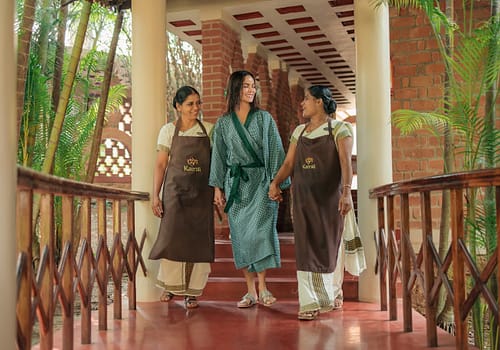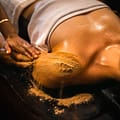The tastes of Ayurveda
Some of us love spicy food, while some are inclined towards sugary treats and then there are people who love a hint of tanginess in their meals. In Ayurveda there are 6 tastes, also known as rasa in Sanskrit, which include Madhura, Lavana, Amla,Tikta, Katu, and Kashaya. These basic tastes can be defined in a number of ways and as per experts; our preference of taste is guided by the three doshas Vata, Pitta, and Kapha. Let us tell you more about the six tastes of Ayurveda and how do they contribute to healthy living. (Image: istock)

Sweet taste (Madhura)
Sweet taste comprises of the elements of earth and water, which balances vata and pitta dosha and increases kapha dosha. As per Ayurveda, sweet taste is said to be the most nourishing one as it helps build tissues and also calms nerves. The rich sources of sweet taste are fruits, grains, natural sugar, and milk. Gita Ramesh, Joint Managing Director, Kairali Ayurvedic Retreat says, “If consumed in moderation, they are known to improve life longevity, strength and body fluids”. She warns, “Excess consumption of sweets may lead to health conditions like weight gain, obesity, and diabetes.” (Image: istock)

Sour taste (Lavana)
Sour taste consists of the elements of water and fire, and is known to fuel pitta and kapha dosha and decrease the vata dosha. Yogurt, sour fruits and vegetables, and fermented foods help increase appetite and production of saliva. This taste helps awaken emotions and also improves digestion. The best sources of sour taste are lemon, vinegar, pickled vegetables, raw mango, and tamarind. (Image: istock)

Salty taste (Amla)
This taste consists of the elements of earth and fire. She informs, “Salty taste helps decrease vata dosha and increases pitta and kapha doshas.” Salty taste is hydrating in nature and hence aids in digestion. The best sources of salty taste are sea salt, rock salt, seafood, seaweed, and leafy greens. As per Ayurveda, excess consumption of salty stuff may lead to an increase in blood pressure and have adverse effects on skin and blood too. (Image: istock)

Bitter taste (Tikta)
Gita Ramesh informs, “This taste has the elements of air and space and is considered to be the coolest of all the six tastes.” Bitter foods are good for pitta and kapha doshas. They are naturally detoxifying and help remove toxic material from the body. It is suggested to eat bitter gourd, neem/Indian lilac, coffee, chocolate, and fenugreek, and other spices to detoxify the body. (Image: Pixabay)

Pungent taste (Katu)
Pungent taste, which is also categorized as ‘Spicy’, consists of the elements of fire and air. It is the hottest taste and helps in improving digestion, appetite, and blood circulation. She informs, “Pungent taste is helpful in balancing kapha dosha, but excessive consumption of it may stimulate pitta dosha.” The best sources of pungent taste are hot pepper, garlic, ginger, and onion. (Image: istock)

Astringent taste (Kashaya)
This one consists of air and earth elements and helps keep cool and calm. Excess consumption of astringent taste may lead to acidity and bloating. As per Ayurveda, mostly all Indian vegetables are astringent and should be consumed in a controlled manner. Apart from that, the rich sources are unripe bananas, cranberries, pineapple, colocasia, jamun, and pomegranate. (Image: istock)













































Leave a Reply